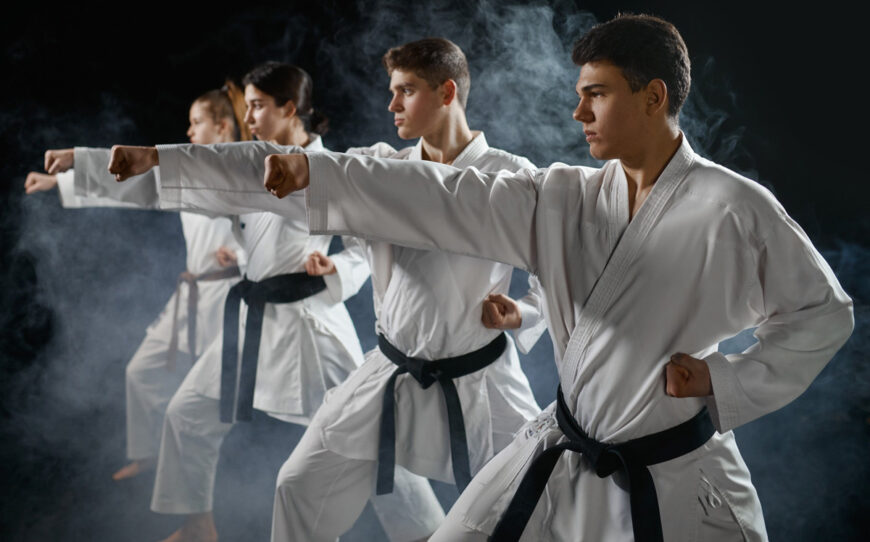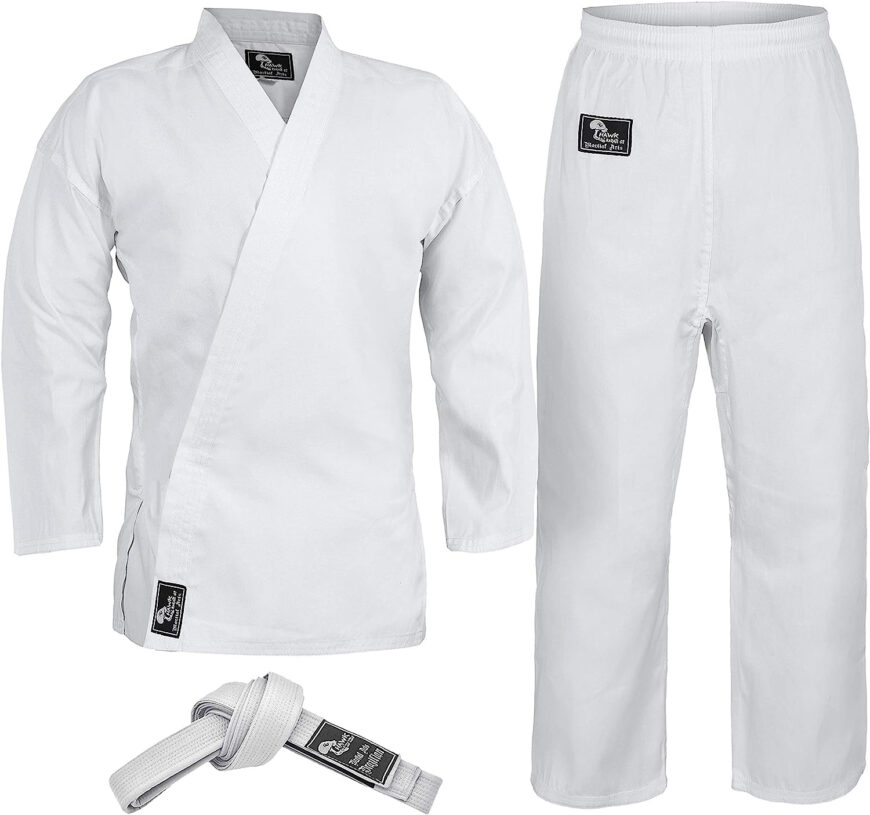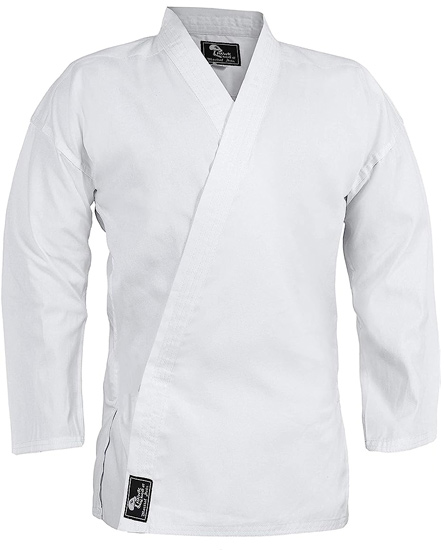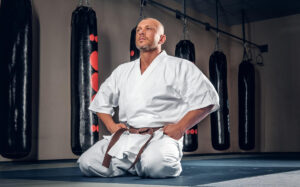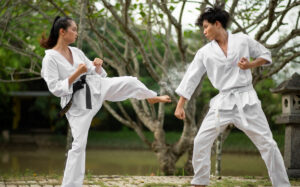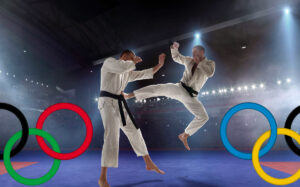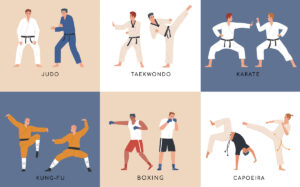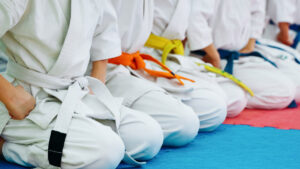The world of martial arts is filled with tradition and history. The one enduring element that captures both aspects is the distinctive outfit that Karate practitioners wear.
But have you ever wondered what this iconic uniform is called? The Karate uniform, known as a Gi (pronounced ghee), has its own unique story to tell.
In this blog post, we will delve into the fascinating origins of the Gi. Explore its symbolic meaning within the discipline of Karate, and understand its impact on martial arts as a whole.
Key Takeaways
- The Karate uniform is called the Gi, but can also be referred to as the Dogi or Keikogi.
- The gi consists of three main parts: jacket, or Gi top; pants, or Zubon; and belt, or Obi. It symbolizes discipline, and respect for tradition, and promotes unity among practitioners worldwide.
- Its history dates back to ancient China and Japan. Here, traditional martial arts like Kung Fu and Judo were developed before being adapted for use in Karate practice. Over time, it has undergone significant changes. All thanks to Gichin Funakoshi for introducing a white cotton uniform that standardized the outfit globally throughout the twentieth century.
- Understanding its significance goes beyond just clothing. It represents values of purity, humility, courage, proficiency, and mastery reflective of each practitioner’s journey.
Understanding The Karate Uniform
The Karate Uniform consists of three main parts: the jacket or Gi top, pants or Zubon, and belt or Obi.
What Is It Called: Karategi, Keikogi, Or Dogi?
The traditional karate uniform goes by several names, most commonly referred to as the Gi. However, depending on who you ask, some traditionalists argue that its name should be Dogi or Keikogi instead.
The official Japanese terminology for this martial arts attire is Karategi.
Despite these differences in terminology, they all refer to the same essential garment worn during karate practice and competition. The modern-day Gi was influenced by the original creation of Judo founder Jigoro Kano.
Three Main Parts: Jacket, Pants, And Belt
The Karate uniform comprises three main components that, together, create the complete outfit for training and competitions:
- Jacket (Uwagi): The upper part of the Karate gi is a jacket made from heavy-duty fabric to withstand rigorous training sessions and combat. Its design allows for easy movement while maintaining a clean, traditional appearance.
- Pants (Zubon): The pants are made from a similar fabric as the jacket but are lighter and more flexible to provide maximum comfort during high kicks and various Karate techniques. They usually come with an elastic waistband or drawstring for efficient adjustment.
- Belt (Obi): Symbolizing rank, skill level, and dedication in martial arts, the belt holds the Gi together in unity. Each color represents the specific rank practitioners achieve in their journey through Karate training.
In addition to these main components, optional accessories like shin guards, handguards, and mouthguards may be utilized. By understanding these distinct parts of the Karate uniform, practitioners display respect for tradition, discipline, and unity within this ancient art form.
History And Evolution of The Karate Uniform
The history and evolution of the Karate uniform date back to ancient Chinese martial arts, which later influenced Japanese styles.
Origins In China And Japan
The roots of the karate uniform trace back to China and Japan, where traditional martial arts like Kung Fu and Judo developed.
As Karate was introduced in Japan by Gichin Funakoshi – the founder of Shotokan Karate – he adopted the Japanese Judo uniform, or Judogi, designed by Jigoro Kano for his students’ training.
This marked a significant departure from the Chinese Quan-Fu apparel, as it perfectly met the needs of the hard-hitting techniques performed by practitioners while still maintaining simplicity and functionality.
Development of Modern Karate Uniform
The modern karate uniform, or gi, has gone through significant changes over the years. Initially, karate practitioners wore whatever they had on hand; it was not until the 20th century that a standardization of uniforms occurred.
Gichin Funakoshi, one of the founders of Shotokan Karate, introduced a white cotton uniform for his students to wear in Japan in the early 1900s. These uniforms consisted of baggy pants and short-sleeved jackets with five buttons down the front.
Today’s modern karate uniform comprises lightweight materials such as cotton or polyester blends designed to be durable and easily washed after training sessions.
The design varies based on style preference but typically consists of three parts—the jacket (called uwagi), pants (zubon), and belt (obi)—and comes in various colors that denote rank.
Influence of Martial Arts On The Design
Various martial arts practices influence the design of the Karate uniform. The gi, or karategi, is based on the original Judo Gi created by Jigoro Kano and was adapted for use in Karate practice.
The light and loose-fitting fabric allows for freedom of movement and flexibility during training and sparring.
Additionally, the traditional white color of the gi represents purity, humility, and respect for tradition in Japanese culture. Over time, other colors such as black, have also become popular to represent experience and mastery.
The design of the gi reinforces respect for discipline and unity among practitioners as they wear a common outfit during practice or competition.
Symbolism And Meaning of The Karate Uniform
The Karate uniform is more than just clothing; it holds significant symbolism and meaning in the martial arts community.
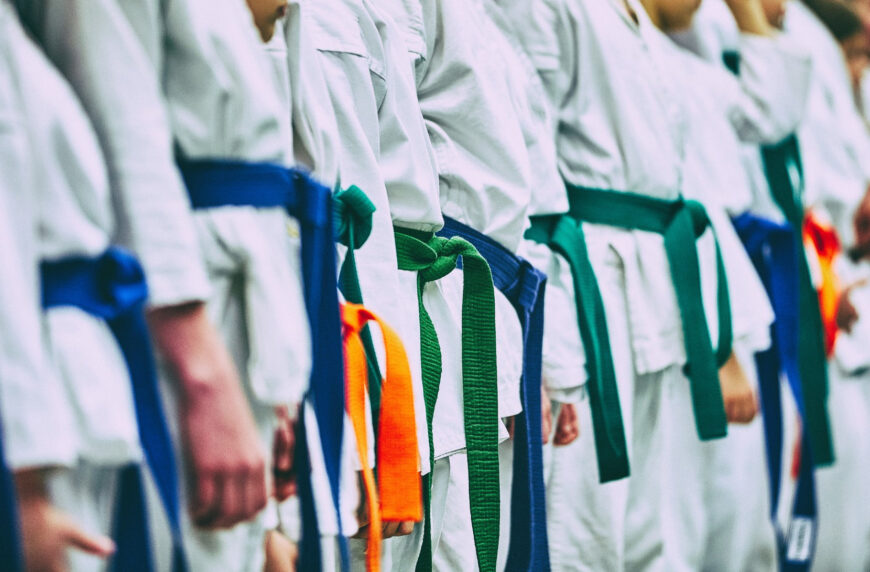
Representation of The Art
The karate uniform, or gi, is more than just a training outfit. It represents the art of karate itself and its values of discipline, respect, and tradition. The white color traditionally worn by beginners symbolizes purity and lack of ego. The black belt worn by advanced practitioners signifies mastery after years of dedication and hard work.
The uniform also serves to promote unity among practitioners regardless of their rank or skill level, emphasizing that everyone is equal in the pursuit of progress and growth within the art.
Significance of The Colors
The colors of a karate uniform hold significant meaning for practitioners. The traditional colors used are white, black, and red. White represents purity and innocence, which symbolizes the beginning stage of martial arts training.
Black signifies proficiency and mastery, representing the highest level of expertise achieved by a practitioner.
In addition to these traditional colors, many schools have added their own color systems to denote different ranks or levels of achievement within their organization.
Understanding the significance of these colors highlights the importance placed on discipline and commitment in martial arts training.
Respect For Tradition And Discipline
Respect for tradition and discipline is an essential part of karate culture, and it reflectes on the design and symbolism of the Karate uniform. The gi represents a sense of identity, unity, and respect for Japanese customs.
The traditional white color symbolizes purity, humbleness, and a beginner’s mind receptive to learning new things.
In addition to the uniform itself, practitioners show respect for tradition by observing strict rules of conduct during training or competitions. Bowing before entering or leaving the dojo signifies reverence for one another and commitment to mutual growth.
Unity Among Practitioners
The karate uniform, not only represents the art and discipline of Karate but also promotes unity among practitioners. All students wear gi regardless of their level, emphasizing that everyone is equal in the dojo.
Another aspect of unity comes from the belt system used in Karate. Each color belt represents different levels of skill and knowledge but ultimately reinforces the idea that everyone is on the same journey.
In addition, practising techniques with a partner requires cooperation and mutual respect for one another’s safety.
As you progress through your Karate training, remember that every time you put on your traditional outfit it conveys not just your commitment to Karate principles but also signifies an unbreakable bond between yourself and fellow practitioners worldwide.
Components of A Karate Uniform
The three main components of a karate uniform are the jacket or gi top, pants or zubon, and the belt or obi.
Jacket Or Gi Top
The jacket, or Gi top, is the most recognizable part of the Karate uniform. It comes from a sturdy cotton canvas designed to withstand the rigors of training and sparring.
The jacket has a loose fit, allowing for a wide range of movement during practice sessions.
The material used to make the gi top can vary depending on the practitioner’s preference and skill level. Beginner students may opt for thick, heavier fabric, while advanced athletes may choose lighter materials that increase breathability and flexibility.
Additionally, some gyms or dojos require specific colors or embroidered patches on their uniforms as an indicator of rank or affiliation within the community.
Pants Or Zubon
The pants, or Zubon are an essential part of the karate uniform. They comprise a lightweight and breathable fabric to provide freedom of movement during training and competition.
The pant legs should be wide enough to allow for easy kicking while maintaining a comfortable fit around the waist. In traditional karate, the pants may have drawstrings instead of elastic bands for a more secure fit.
It’s worth noting that the color of the pants can hold significance in some styles of karate, as it can represent different levels of proficiency or variation within certain schools.
For example, some schools use black pants to indicate that a practitioner has achieved mastery level in specific techniques or skills, while others may use different colors such as red or blue based on their own traditions and requirements.
Belt Or Obi
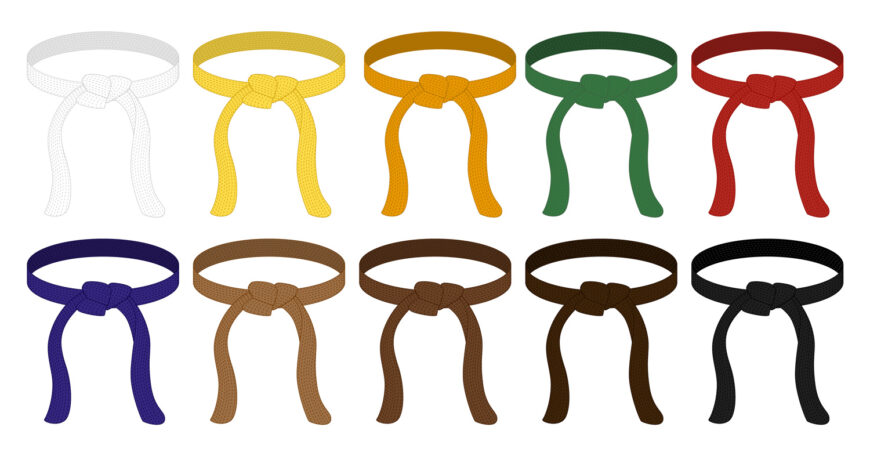
The belt, also known as an obi, holds significant importance in the Karate uniform and represents a practitioner’s rank. The color of the belt signifies one’s skill level and progress.
Beginners usually wear white belts, while black belts indicate mastery of the art. In addition to its practical function of holding the Gi together, the Obi serves as a symbol that reminds practitioners of discipline and respect for tradition.
Moreover, it fosters unity among students by creating camaraderie through shared experiences with their peers who are on similar training journeys but at different stages of development.
Must read: The Karate Belt Order, Colors, And Ranking System
Optional Accessories (shin And Hand Guards, Mouthguard, Etc.)
Karate practitioners sometimes wear optional accessories to protect themselves while training or competing. These accessories include:
- Shin guards: They cover the lower leg and offer protection from kicks and other strikes.
- Hand guards: These are worn to protect the hands and knuckles from injuries caused by striking objects or opponents.
- Mouthguards: These are used to protect teeth, lips, and gums during sparring or competition.
- Headgear: This accessory offers protection from head injuries that can occur during sparring or competitions.
- Groin guard: This is a protective cup worn by male karateka to prevent injuries to the groin area.
- Foot Pads: They’re essential for martial artists when it comes to kicking and related techniques as they reduce the risk of injury.
It’s important to note that while these accessories may provide added protection, they’re not mandatory for all karate practitioners. The use of such items varies depending on individual preference and competition rules.
FAQs:
1. What is the traditional name for the karate uniform?
The traditional name for the karate uniform is “gi” or “dōgi,” which means training clothing in Japanese.
2. Why is a karate uniform important in martial arts?
A karate uniform is an essential part of martial arts because it helps to create a sense of unity among students and reflects respect for tradition and discipline. It also facilitates ease of movement, allowing practitioners to perform techniques with maximum efficiency.
3. What are the components of a typical karate uniform?
Most standard karate uniforms consist of three pieces: a jacket (uwagi), pants (zubon) and a belt (obi). The jacket normally has long sleeves, while the pants may be either full-length or short depending on preference.
4. How do I choose the right size for my karate uniform?
Choosing the correct size can vary between brands, so it’s important to refer to each brand’s sizing chart before making your selection. Generally, you should consider your height, weight and body type when selecting a gi as well as whether you prefer more room or a tighter fit for optimal movement during training sessions.
Conclusion
The Karate uniform, or gi, is not just a piece of clothing but a symbol of dedication and unity among martial artists. Understanding its significance, design, and care is crucial for any practitioner. Embracing the gi means embracing the timeless traditions and values of Karate itself.

